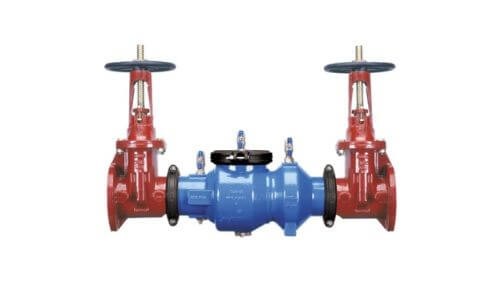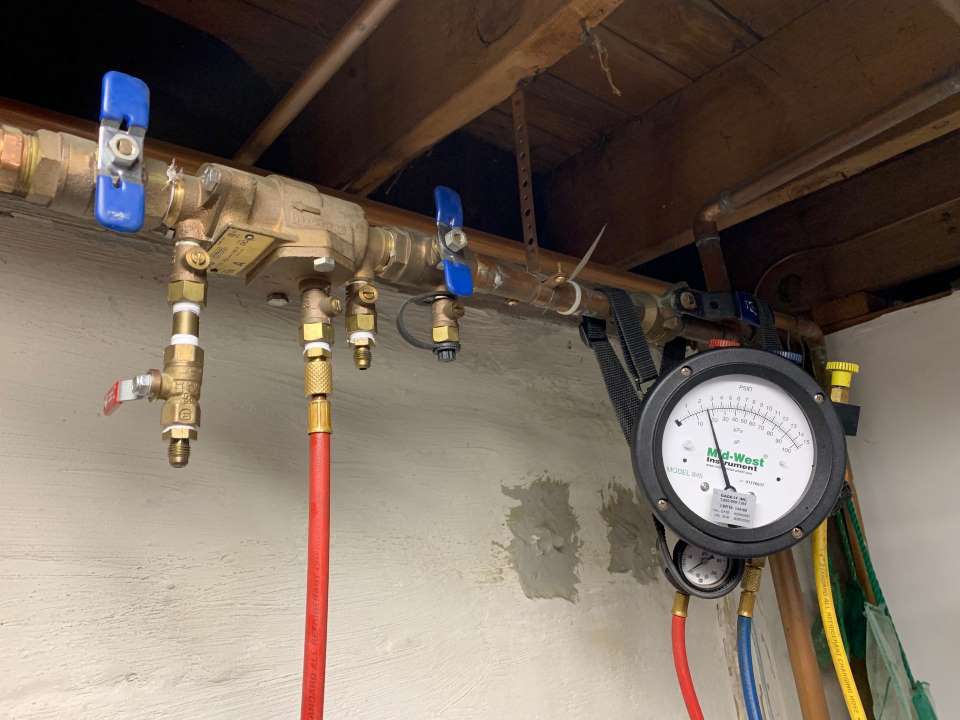Are you searching for ideas about Backflow Testing?

Yes, you need to backflow test your residence's water system to guarantee that the water is free of contaminants as well as harmful degrees of chemicals. Because of the devices called for and area for mistake, you ought to not attempt to do heartburn testing on your own. We suggest that you call an expert plumber every couple of years to evaluate your water.
Backflow Can Effect Both You as well as Your City
Due to the fact that hazardous backflow can affect the public water supply in enhancement to a single building, many cities develop backflow guidelines. Fortunately, modern cities have backflow tools in place that protect the water that comes from most residences and business properties. The genuine hazard comes from irrigation systems, which can harm the water supply with hazardous plant foods, manure, and also various other chemicals.
What Causes Backflow?
A typical cause of heartburn is a loss of water stress that creates the water to siphon back into the water supply. After some time, there is a loss in water pressure as well as the tube starts to draw the water back into the water supply. As you can picture, there are currently chemicals from the paint that are getting in the water supply, possibly posturing a danger.
Heartburn Testing is Required by Regulation in Particular Cities
Relying on where you live, you could really be needed by law to backflow test your regulation. Iowa City maintains a record of all properties served by the city's water supply. The city calls for that specific "high-hazard" facilities undertake heartburn testing. Sometimes, residential properties such as houses and apartment are impacted.
You Can Stop Backflow
If you have a specialist plumber mount a backflow gadget, dangerous backflow is quickly avoidable. The plumber will certainly also check for backflow as well as determine if there is an active threat. The primary purpose of a backflow gadget is to stop water from flowing backwards into your water system. Plumbing professionals mount the device on the pipelines in your home to make sure that the water just moves in the correct direction.
What is Backflow?
Basically, backflow is when water moves upwards-- the contrary direction in the plumbing system. This is additionally known as "backpressure." When the water relocates this direction, it can combine with unsafe toxins as well as present a risk.
Call a Plumber to Examine for Backflow Before It is Too Late
A plumbing company can swiftly test your house's water to establish if there are any hazardous chemical degrees. And if you do find that your water has high degrees of toxins, a plumber can conveniently install a backflow avoidance tool.
Yes, you need to backflow test your house's water supply to make sure that the water is cost-free of toxins and dangerous levels of chemicals. Many cities establish heartburn standards due to the fact that unsafe heartburn can influence the public water supply in enhancement to a solitary building. A normal cause of backflow is a loss of water stress that triggers the water to siphon back into the water supply. After some time, there is a loss in water pressure and also the pipe begins to suck the water back right into the water supply. The major function of a backflow tool is to stop water from flowing in reverse right into your water supply.
Backflow Testing: What Is It, and Why Is It Necessary?
What Is Backflow?
Backflow is exactly what you might imagine this somewhat gross-sounding word to mean. It is contaminated water that has reversed flow, and as a result, enters into the clean water lines of homes and businesses. Backflow is typically caused by a significant change in water pressure. This can be due to a water main break, frozen pipes or an unexpectedly high demand on the water system. It can occur at any cross-connection between clean and dirty water in residential, commercial or industrial water lines. And the worst part – backflow can contain hazardous materials like human waste, pesticides or chemicals. Needless to say, it poses very, very serious health concerns, not to mention the potential for a heap-load of expensive stress!
Backflow Prevention and Testing
In order to safeguard against backflow in standing structures, a backflow prevention device should be installed by a trusted team of professionals. Once installed, if there should ever be an unexpected or dramatic change in water pressure, the device will prevent backflow from entering into the clean water supply system. But, again, it’s important that this device is properly installed by a professional so that they can test it and ensure that the clean water line remains contaminant free. This really is key.
While personal standards and responsibilities should maintain certain routine testing requirements, there are already municipal codes in place that require annual testing of these backflow prevention devices. This ensures that they are functioning properly and that no hazardous contaminants are spilling out into the clean water supply. If, however, testing of any device is not completed on time, you should know that a property or business’ water supply might be interrupted, and the property owner might even face fines. So, to avoid this from happening to you, we recommend scheduling a backflow test well in advance.
Fortunately, here at Tritan, we can help schedule and carry out backflow testing for your property. We provide a variety of backflow-related services, including prevention device installation and testing. Call us today and make sure that this stressful problem doesn’t happen to you and your property or business.
https://www.tritan-plumbing.com/blog/2018/february/backflow-testing-what-is-it-and-why-is-it-necess/

Do you appreciate reading up on What is Backflow Testing?? Put a review below. We will be glad to listen to your feelings about this write-up. We are looking forward that you visit us again soon. Those who appreciated our page plz don't forget to pass it around. I love reading our article about Backflow Assembly Testing.
Request expert assessment.
Comments on “Should I Have a Backflow Test for My Water”